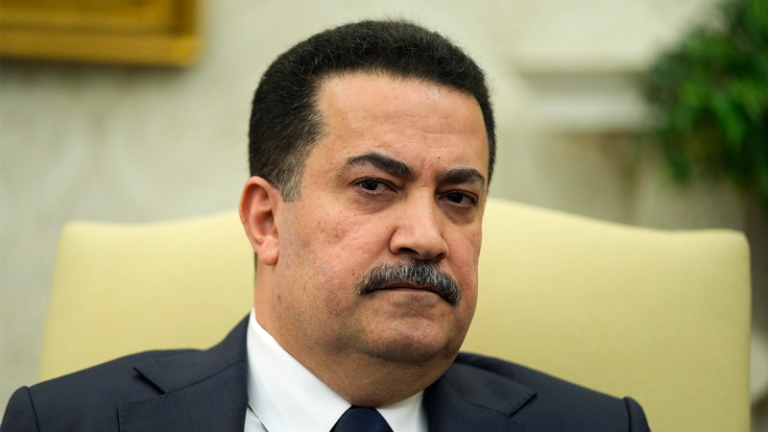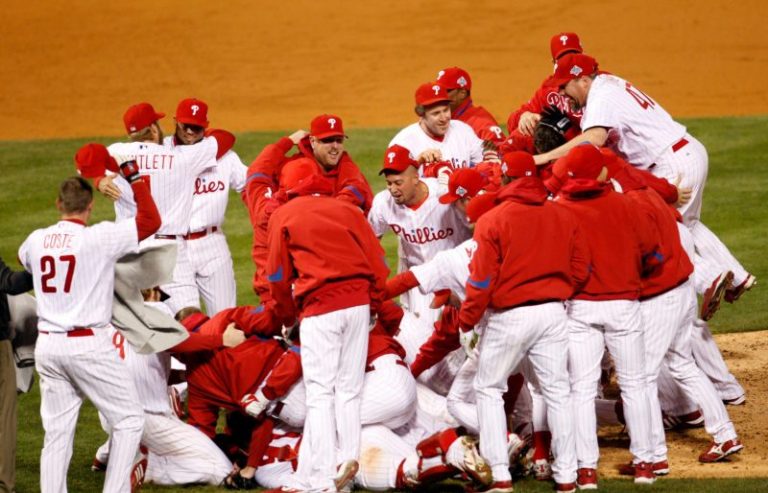The first few days of NFL free agency are often hectic. The 2025 edition of the event was no exception, as players flew off the board quickly when the league’s ‘legal tampering’ window opened.
The NFL’s trade market was also active before and during NFL free agency. Star receivers like DK Metcalf and Deebo Samuel were among the notable players traded while the Houston Texans surprised by moving on from veteran left tackle Laremy Tunsil.
There are still plenty of quality free agents yet to sign. Aaron Rodgers, Russell Wilson and Cooper Kupp rank among the most notable players still available as NFL free agency continues.
But how have NFL teams fared during free agency’s first wave? Here are grades for all 32 teams.
Arizona Cardinals
Grade: A-
The Cardinals have lacked high-end edge rushers since Chandler Jones’ final season with the team in 2021. They landed one of the top pass rushers on the open market, Josh Sweat, to change that. Sweat had 2.5 sacks in Super Bowl 59 and has experience playing for Arizona head coach Jonathan Gannon in Philadelphia, so he should ingratiate himself into Arizona’s defense easily.
Arizona also added backup quarterback Jacoby Brissett and run-stuffing defensive tackle Dalvin Tomlinson to build up its roster depth. Add in the re-signings of starting guard Evan Brown and edge rusher Baron Browning and the Cardinals have done well for themselves on the open market.
Atlanta Falcons
Grade: B-
The Falcons entered the 2025 NFL offseason cap-strapped by the four-year, $180 million contract they gave Kirk Cousins last year. As a result, they couldn’t spend significantly on the free agent market.
Still, Atlanta found a couple of solid external free agent contributors in edge rusher Leonard Floyd (one year, $10 million) and linebacker Divine Deablo (two years, $14 million). Floyd in particular should help the Falcons improve upon their 31 sacks from last season (second-worst in the NFL), but the 32-year-old doesn’t constitute as a major needle-mover.
Baltimore Ravens
Grade: B
The Ravens haven’t been too active yet in free agency, but retaining one of their top offensive linemen, left tackle Ronnie Stanley, on a three-year, $60 million deal ahead of the legal tampering period was critical. That will allow the Ravens to return four of their five starting offensive linemen from 2024.
As far as external signings go, Baltimore has only added veteran receiver DeAndre Hopkins on a one-year, $6 million deal. That’s a worthwhile gamble on the three-time All-Pro, but it doesn’t qualify as a major move with the 32-year-old now past his prime.
Buffalo Bills
Grade: B+
The Bills spent the 2024 offseason taking care of their own, as they extended Josh Allen, Gregory Rousseau, Khalil Shakir and Terrell Bernard. They have also added a handful of veteran role players including defensive tackle Larry Ogunjobi (one year, $8.3 million), receiver Joshua Palmer (three years, $36 million) and outside linebacker Michael Hoecht (three years, $24 million).
Perhaps the most interesting move was Buffalo’s decision to swap out Von Miller for Joey Bosa. The former Chargers star is younger than Miller but has struggled to stay healthy in recent seasons. That said, Bosa’s deal is a one-year pact worth $12.6 million, so the Bills didn’t take any long-term risk by adding him.
Carolina Panthers
Grade: B
The Panthers have a clear directive in mind during the 2025 offseason: to add young talent to their defense. It began when they made Jaycee Horn the highest-paid cornerback in the NFL. It continued when they gave four players aged 26 or younger – defensive tackle Tershawn Wharton, safety Tre’von Moehrig, edge rusher Patrick Jones II and defensive tackle Bobby Brown III – multi-year contracts.
Carolina may have spent a little bit above market value on some of those deals, but they are hoping the young talents will grow into them. That’s not a bad gamble considering the Panthers ranked last in defensive EPA last season.
Chicago Bears
Grade: A
Chicago’s entire interior offensive line was set to hit free agency in 2025. The Bears used this opportunity to make wholesale changes up front after Caleb Williams was sacked a league-high 68 times last season.
The Bears traded for veteran guards Jonah Jackson, who worked with new Bears head coach Ben Johnson while with the Lions, and Joe Thuney, who was an All-Pro in back-to-back seasons with the Chiefs. They capped off their changes by signing Drew Dalman – Pro Football Focus’ fourth-graded center from 2024 – to a three-year deal worth up to $42 million.
Add in Chicago’s signings of Dayo Odeyingbo (three years, $48 million) and Grady Jarrett (three years, $43.5 million) to bolster the defensive front and the Bears got much better in the trenches. That should position them to improve upon their 5-12 record from last season.
Cincinnati Bengals
Grade: D+
The Bengals entered the 2025 offseason hoping to retain Ja’Marr Chase, Tee Higgins and Trey Hendrickson long-term. Thus far, Cincinnati slapped Higgins with the franchise tag again, gave Hendrickson permission to seek a trade and saw Myles Garrett earn a contract worth $40 million in AAV, which could drive up the price of Chase’s eventual extension. That’s less than ideal for the ever-penny-pinching Bengals.
Cincinnati did well to retain some of their key free agents – most notably tight end Mike Gesicki (three years, $25.5 million) and B.J. Hill (three years, $33 million) – but the Bengals haven’t landed many upgrades to their defense. That puts a lot of pressure on the Bengals front office to nail the draft to solve the defensive woes they faced last season.
Cleveland Browns
Grade: B+
Myles Garrett requested a trade away from the Browns, but Cleveland found a way to retain their star by making him the highest-paid non-quarterback in the NFL. The four-year, $160 million deal was pricey, but it allowed the Browns to keep their best player and keep his ‘Cleveland to Canton’ trajectory alive.
Beyond that, the Browns have done well despite being handcuffed to Deshaun Watson’s albatross contract. Landing Kenny Pickett via trade as cheap quarterback competition was particularly notable while Cornelius Lucas (two years, $10 million) should replenish some of Cleveland’s departing tackle depth.
Few will be overly excited by what the Browns have accomplished, but Andrew Berry has done a nice job considering the resources with which he is working.
Dallas Cowboys
Grade: C
Jerry Jones’ team hasn’t spent more than $10 million in AAV on an external free agent since Greg Hardy in 2015. That streak seems likely to stay alive another year, unless the Cowboys can sign Cooper Kupp.
Among the Cowboys signings, running back Javonte Williams and edge rusher Payton Turner have some upside on one-year deals while guard Robert Jones and defensive tackle Solomon Thomas could also end up playing significant roles. Buying low on Kaiir Elam via trade was also a worthwhile gamble.
Still, the Cowboys aren’t looking much better this year than they were in their 7-10 season last year. That’s less than ideal playing in the top-heavy NFC East.
Denver Broncos
Grade: A
The Broncos ranked No. 1 in defensive EPA last season. Nonetheless, they managed to get better on that side of the ball by signing a couple of 49ers – 2022 All-Pro safety Talanoa Hufanga and elite run-stopper Dre Greenlaw – to three-year deals. They should give Vance Joseph’s defense more playmaking power.
Denver also added a mismatch weapon at tight end in Evan Engram (two years, $23 million) and kept starting defensive tackle D.J. Jones on a three-year, $39 million deal. The Broncos’ window for contention is open with Bo Nix on a cheap rookie contract, so this should help them in their quest to make a second consecutive playoff appearance.
Detroit Lions
Grade: A-
The Lions lost Carlton Davis in free agency but were able to add D.J. Reed, a slight upgrade over Davis, on a cheaper deal (three years, $48 million). They also retained defensive tackle Levi Onwuzurike on a reasonable one-year deal to continue in rotation with D.J. Reader and Alim McNeill and managed to keep versatile swing tackle Dan Skipper.
The only blight on Detroit’s free agency is that the team released Za’Darius Smith before anyone could see him play across from Aidan Hutchinson.
Green Bay Packers
Grade: B-
The Packers aren’t typically active in free agency, but they signed a couple of starters this year in left guard Aaron Banks and cornerback Nate Hobbs.
Green Bay may have overpaid for Banks (four years, $77 million) but his presence at left guard allows Elgton Jenkins to move to center to replace the departing Josh Myers. Meanwhile, Hobbs adds a quality slot man and versatility to a cornerback room that needed depth and talent.
Those two signings are solid, as are the team’s decisions to re-sign kicker Brandon McManus and linebacker Isaiah McDuffie.
Houston Texans
Grade: C-
The Texans have had a strange offseason. They made a nice trade to acquire C.J. Gardner-Johnson from the Eagles by offloading first-round guard bust Kenyon Green, but that was one of many moves in the dismantling of their offensive line.
The Texans have made a couple quality buy-low moves, like trading for receiver Christian Kirk and signing edge rusher Darrell Taylor, but it doesn’t feel as though they have improved upon their playoff roster from last season yet.
Indianapolis Colts
Grade: B-
The Colts needed to add talent to their secondary and have done so, agreeing to terms with cornerback Charvarius Ward and safety Cam Bynum on a pair of $60 million contracts. Ward should fit particularly well into Lou Anarumo’s defense and will relish a fresh start after mourning the death of his 1-year-old daughter during the 2024 season.
The Colts lost a couple of offensive lineman, including standout right guard Will Fries, which is dragging their grade down slightly. So too are questions about whether Daniel Jones was the right quarterback to pair with Anthony Richardson, but Jones is just on a one-year, $14 million deal.
Jacksonville Jaguars
Grade: C+
The Jaguars haven’t yet done much to write home about as new general manager James Gladstone and head coach Liam Coen retool the roster. The Jaguars have focused on depth signings, grabbing tight ends Johnny Mundt and Hunter Long to replace Evan Engram while signing Dyami Brown to replace the departing Christian Kirk.
Notably, the Jaguars have signed three offensive linemen – Patrick Mekari, Robert Hainsey and Chuma Edoga – to multi-year deals. Mekari (three years, $37.5 million) and Hainsey (three years, $21 million) are being paid like starters while Edoga is more likely to be a swing tackle.
None of Jacksonville’s signings have been flashy, but they should be deeper than they have been in recent seasons.
Kansas City Chiefs
Grade: B-
The good: Kansas City solidified their defense by re-signing linebacker Nick Bolton and agreeing to a reasonable deal with Kristian Fulton to be the team’s No. 2 cornerback. The bad: they traded their All-Pro left guard Joey Thuney and will have questions on the left side of the line as a result even after signing Jaylon Moore to a two-year, $30 million deal.
Those offensive line questions will worry Chiefs fans who have watched Patrick Mahomes get crushed by pressure in his two Super Bowl losses.
Las Vegas Raiders
Grade: B+
The Raiders locked Maxx Crosby in with a contract extension worth $35.5 million in AAV. That constituted their big splash of free agency while their trade for Geno Smith gave them a much-needed upgrade at quarterback.
Aside from that, Las Vegas targeted experienced starters and role players – like safety Jeremy Chinn, right guard Alex Cappa and linebacker Elandon Roberts – to plug hole and add depth to its roster. Overall, this seems like the right way for the team to improve upon their difficult 2024 season.
Los Angeles Chargers
Grade: B
The Chargers have lost some key players in free agency, namely Poona Ford, Kristian Fulton, Joey Bosa and Josh Palmer. They have also kept some of their key players, like edge rusher Khalil Mack and center Bradley Bozeman, while adding running Najee Harris, who profiles as a great fit for Greg Roman’s offense, on a one-year deal.
General manager Joe Hortiz appears to be taking a calculated approach in free agency as he continues to shape the team into one built around its running game and defense. That worked last season and should work just fine in 2025.
Los Angeles Rams
Grade: A-
The Rams made one of the most underrated signings in early free agency by landing Poona Ford on a three-year deal worth up to $30 million. He was one of the NFL’s best defensive linemen against the run last season, and Los Angeles desperately needed to upgrade its run defense.
Elsewhere, the Rams kept left tackle Alaric Jackson on a market-value deal ahead of free agency and landed Davante Adams as a quality replacement for Cooper Kupp. They also extended Matthew Stafford, which should allow them to remain a contender in 2025 and beyond.
The only downside to Los Angeles’ offseason is that they didn’t get anything on the trade market for Kupp.
Miami Dolphins
Grade: B
The Dolphins have done a solid job adding talent to their roster despite having minimal wiggle room under the salary cap. They landed an upgrade at right guard in James Daniels (three years, $24 million) and a bigger-bodied receiver in Nick Westbrook-Ikhine who will pair well with speed demons Tyreek Hill and Jaylen Waddle.
While losing Jevon Holland will hurt, landing Ifeatu Melifonwu on a one-year deal to replace him is a solid upside swing. It’s hard to complain too much with Miami’s approach as a result.
Minnesota Vikings
Grade: A
Much will be made about the Vikings losing both Sam Darnold and Daniel Jones in free agency. However, with the team ready to trust J.J. McCarthy as a starter, the team was smart not to overpay for a veteran quarterback. Instead, they spent heavily in the trenches, bringing in Ryan Kelly and Will Fries from the Colts to play center and right guard respectively while also signing veteran defensive linemen Jonathan Allen and Javon Hargrave.
Some will argue that giving Fries $88 million is a bit rich; others may wonder whether Allen will be able to live up to a $20 million AAV after seeing his sack numbers decline in four consecutive seasons.
Even so, Minnesota looks a lot stronger up front than it was last season. That could allow the Vikings to continue to build upon their 2024 success, provided that McCarthy is ready to step into the starting role.
New England Patriots
Grade: A
The Patriots have landed upgrades at every level of the defense. Milton Williams and Harold Landry will add much needed pop to a unit that produced the fewest sacks in the NFL last season; Robert Spillane will provide leadership and instinctive tackling ability at linebacker; and Carlton Davis is a proven, solid outside starter to pair with All-Pro Christian Gonzalez.
Patriots fans may be perturbed that the team hasn’t added a left tackle or a top receiver in free agency yet as they look to build around Drake Maye. That said, they did sign Morgan Moses to be an upgrade on the right side. The veteran starter should be a major upgrade over Demontrey Jacobs – who graded as Pro Football Focus’ worst qualified tackle last season – and came with a reasonable $24 million price tag over three years.
New Orleans Saints
Grade: B
The Saints have long been in an unfavorable salary cap situation, but they continue to find ways to circumvent it and add to their team. This year, they agreed to a reasonable, three-year pact with safety Justin Reid worth up to $31.5 million and managed to keep edge rusher Chase Young on a three-year, $51 million deal. That’s not bad for a team that was once projected to be more than $50 million over the cap.
New York Giants
Grade: B-
The Giants spent most of their early free agent resources on their secondary. They signed cornerback Paulson Adebo and safety Jevon Holland to three-year deals worth a combined $99.3 million. Adebo and Holland are both just 25 years old, so New York in banking on the duo continuing to grow into a dynamic, playmaking tandem.
Some will question why the Giants were willing to pay Holland $15 million in AAV but not Xavier McKinney $16.75 million in 2024. Nonetheless, the Giants’ secondary is improved, and so is their trench depth after agreeing to deals with Chauncey Golston and Roy Robertson-Harris on the defensive line and backup offensive tackles in James Hudson and Stone Forsythe.
New York Jets
Grade: C+
The Jets are a tough team to grade. On one hand, they needed to undergo significant changes after a 5-12 season. They are getting that with Aaron Rodgers, Davante Adams, C.J. Mosley and D.J. Reed all departing.
On the other hand, it’s fair to scrutinize some of New York’s replacements. Jamien Sherwood fared well in place of Mosley last year, but was it wise to give a one-year starter $15 million in AAV? And what about Brandon Stephens, who was signed to a three-year, $36 million deal after allowing a 65 catches and 107.4 passer rating in 2025?
Add in Justin Fields (two years, $40 million) and New York’s free-agent class has been polarizing thus far. But given the class’ relative youth, it undeniably come with upside.
Philadelphia Eagles
Grade: C-
The Eagles didn’t have a lot of salary cap wiggle room, so they were expected not to be very active in free agency. They managed to re-sign All-Pro linebacker Zack Baun to a three-year, $51 million deal, but aside from that, they have focused on adding new players like Josh Uche and Harrison Bryant on cheap, short-term deals.
Philadelphia has lost five key defensive players from its Super Bowl 59-winning roster, the most head-scratching of which was C.J. Gardner-Johnson. They sent him to the Texans in a trade involving guard Kenyon Green, who has struggled through three NFL seasons since being a first-round pick.
The Eagles figure to be more active in the second wave of free agency as they bargain hunt, but it’s hard to feel too good about their offseason to date – even if they were expected to be quiet.
Pittsburgh Steelers
Grade: B+
It’s hard to fully grade the Steelers’ offseason while awaiting an answer to the Aaron Rodgers saga, but thus far, the team has done well to add to areas of need. DK Metcalf gives the team another high-quality receiving threat, Darius Slay can be a solid stopgap No. 2 cornerback and Mason Rudolph provides the team with solid, experienced depth at quarterback while making just $8 million over two years.
Questions exist about whether Metcalf’s skill set can complement George Pickens’ but there should be plenty for both to serve as strong downfield threats. As long as the Steelers land a solid quarterback, they should position themselves for another playoff run.
San Francisco 49ers
Grade: D
The 49ers are retooling significantly during the offseason. The team parted with veterans Deebo Samuel, Kyle Juszczyk, Javon Hargrave and Leonard Floyd by choice while losing starters Talanoa Hufanga, Dre Greenlaw, Charvarius Ward and Aaron Banks on the free agent market.
Meanwhile, San Francisco’s biggest additions have been blocking tight end Luke Farrell on a three-year, $20.25 million deal, wide-out DeMarcus Robinson on a two-year, $9.5 million deal and quarterback Mac Jones on a two-year deal worth $7 million. That won’t inspire hope among 49ers fans that San Francisco can make it back to the postseason after a disappointing 6-11 season.
Seattle Seahawks
Grade: C-
The Seahawks’ free agency grade largely depends on how you feel about the Sam Darnold signing. Some will like it because the 27-year-old is much younger than the 34-year-old Geno Smith and worked with new offensive coordinator Klint Kubiak in San Francisco.
Others will point out that Darnold had the third-longest time to throw in the NFL last season, ahead of only Lamar Jackson and Jalen Hurts. That could be a recipe for disaster behind Seattle’s porous offensive line, which has been a problem for the better part of a decade.
The Seahawks also gave DeMarcus Lawrence (33 in April) a three year, $32.49 million deal that doesn’t exactly mesh with the team’s quest to get younger. Losing DK Metcalf and Tyler Lockett will also weaken their receiving corps, so it’s hard to be overly optimistic about Seattle’s offseason thus far.
Tampa Bay Buccaneers
Grade: A-
The Buccaneers spent most of the offseason retaining their own talent. No deal was more impressive than the three-year, $66 million deal they agreed to with Chris Godwin, who reportedly turned down more money from the Patriots to go back to Tampa Bay.
Tampa Bay also addressed its need for a high-end pass rusher by inking Haason Reddick to a one-year, $14 million deal. Overall, it’s yet another quality start to the offseason for general manager Jason Licht.
Tennessee Titans
Grade: B
The Titans needed to fix their offensive line after having trouble on the right side last season. Tennessee remedied that by signing left tackle Dan Moore Jr. to a four-year, $82 million contract. The deal was an overpay but will allow 2024 first-round pick JC Latham to move to the right side. Latham and veteran free-agent signing Kevin Zeitler will do a much better job on the right side than what Tennessee had last season while Moore should be serviceable on the left side.
The Titans have also signed reasonable deals with defensive lineman Dre’Mont Jones, linebacker Cody Barton and safety Xavier Woods, so this has been a solid overall free-agent period for first-year general manager Mike Borgonzi.
Washington Commanders
Grade: A
The Commanders swung two of the biggest trades of the NFL offseason to land Deebo Samuel and Laremy Tunsil. The two should provide major upgrades to the team’s already strong offense and make it one of the best units in the league.
The Commanders also re-signed some of their key free agents like Bobby Wagner, Zach Ertz, John Bates and Marcus Mariota. Washington could still stand to add another top edge rusher to its defensive line, but as it stands, the Commanders roster is looking rock-solid.
This post appeared first on USA TODAY









